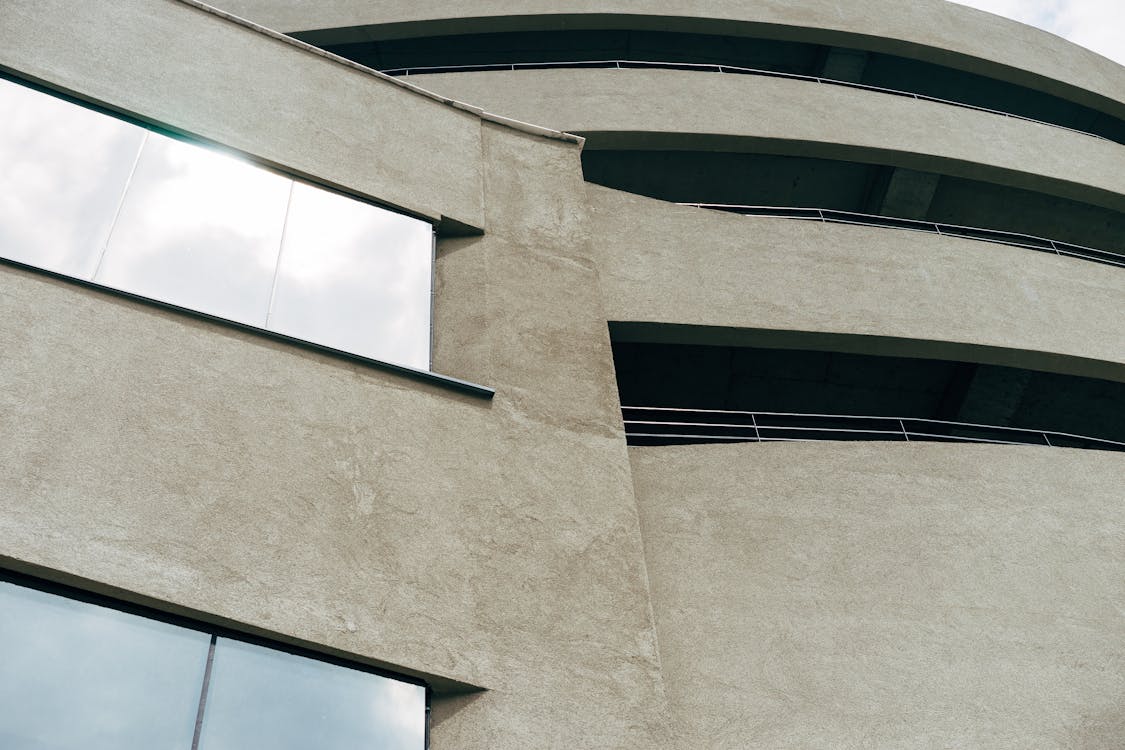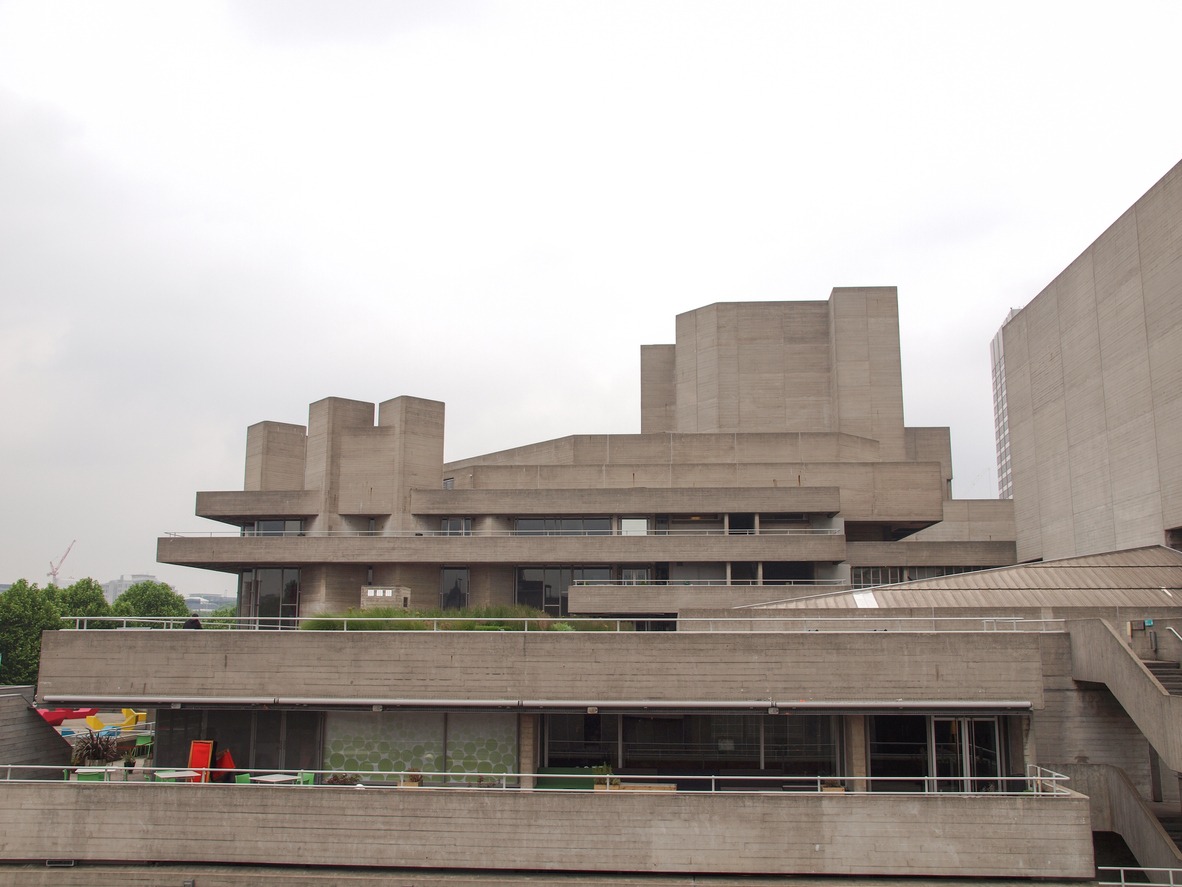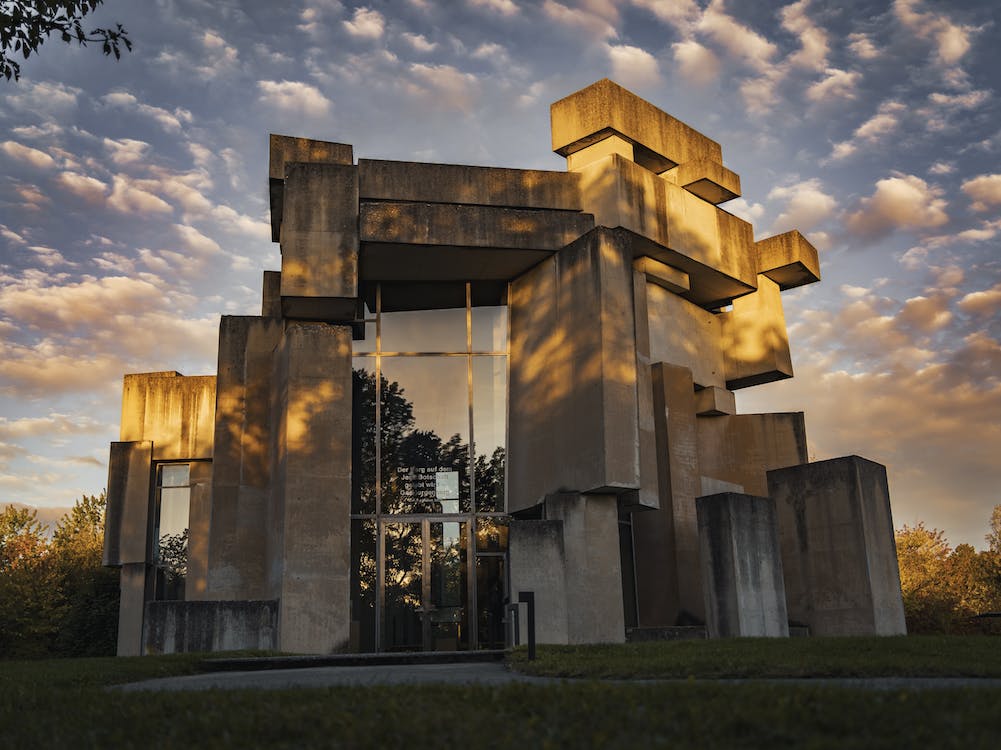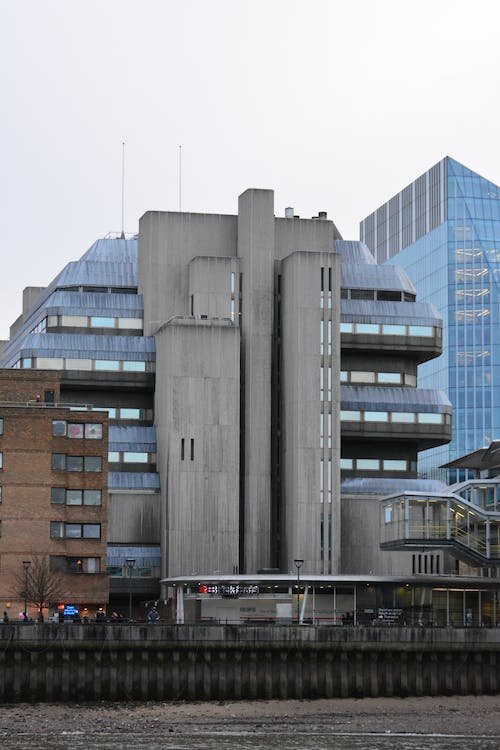Brutalist architecture, a style that emerged in the mid-20th century, is known for its bold, unapologetic use of raw concrete and stark, geometric forms. Originating as a reaction against the light, airy aesthetics of modernism, Brutalism sought to showcase the raw materials and structural elements of buildings without disguise. This architectural movement, reaching its zenith between the 1950s and 1970s, is marked by its rugged, monumental structures that often dominate their urban landscapes. Ask a professional if you want to know more about concrete companies.
Despite its intentions of honesty and functionality, Brutalist architecture has always been a subject of heated debate. To some, its heavy use of concrete and imposing scale convey a sense of strength and integrity. To others, these same features make Brutalist buildings appear cold, inhospitable, and out of touch with their human scale and surroundings. This polarizing nature of Brutalism sets a fascinating stage for an in-depth exploration of the various controversies and criticisms it faces. As we delve deeper into this architectural style, we uncover not just a debate about aesthetics, but a complex conversation about how architecture interacts with its environment and the people who inhabit it.
Aesthetic Controversies of Brutalist Architecture
Perceived Coldness and Monotony
Brutalist architecture is often criticized for its perceived coldness, attributed to the extensive use of raw concrete. This material, while celebrated for its honesty and strength, can come across as austere and unwelcoming, lacking the warmth and texture of more traditional materials like wood or brick. Furthermore, the style’s emphasis on geometric shapes and uniformity can lead to a sense of monotony. The repetitive architectural elements, designed to underscore functionality and structural honesty, can sometimes result in an environment that feels stark and uninspiring.
Oppressiveness
The massive scale and heavy massing characteristic of Brutalist buildings contribute to a sense of oppressiveness. These structures, often towering and fortress-like, can dominate their surroundings, overshadowing adjacent buildings and public spaces. This dominance can create environments that feel imposing rather than inviting, leading to a perception of Brutalism as exclusionary and impenetrable.
Public Reception and the “Ugliness” Debate
Public reception of Brutalist architecture has frequently been less than favorable, with many of its buildings being labeled as “ugly” or aesthetically displeasing. This debate over ugliness is highly subjective but highlights the challenge Brutalism faces in achieving widespread aesthetic acceptance. The stark, unadorned appearance of Brutalist structures, while admired by some for its architectural honesty, often fails to resonate with the broader public, who may seek beauty and grace in the built environment.
Contrast with Other Architectural Styles
When compared to other architectural styles, Brutalism’s aesthetic qualities can appear less appealing. Styles such as Art Deco, with its lavish ornamentation, or the organic designs of Frank Lloyd Wright, which seek harmony with nature, offer a sense of refinement and connection often absent in Brutalist architecture. Similarly, the sleek, glass-and-steel facades of modern skyscrapers convey a sense of progress and optimism that the monumental concrete forms of Brutalism deliberately avoid. This contrast underscores the distinct place Brutalism holds within the architectural landscape, one marked by controversy and a challenge to conventional notions of beauty and form.
Social and Cultural Criticisms of Brutalist Architecture
Social Implications in Urban Landscapes
Brutalist designs have significantly impacted urban landscapes, often becoming dominant features within cityscapes. While intended to embody strength and functionality, these imposing structures can sometimes contribute to an unwelcoming urban environment. The sheer scale and raw materiality of Brutalist buildings can create a disconnect between the structures and the human scale, leading to spaces that feel less accommodating to daily social interactions. This has raised concerns about the extent to which Brutalist architecture considers the human element within urban planning, potentially prioritizing architectural statement over community inclusiveness.
Impact on Community Engagement and Public Spaces
The integration of Brutalist buildings into public spaces has been a point of contention. Critics argue that the imposing nature of these structures can deter the vibrant use of surrounding areas, affecting community engagement and social cohesion. Public spaces flanked by Brutalist architecture might be perceived as less inviting, impacting their role as gathering places. The challenge lies in how these monumental buildings interact with their environment, potentially overshadowing public realms instead of fostering lively, communal activities.
Brutalist Structures in Societal Institutions and Associated Stigmas
Brutalist architecture has been prominently used in societal institutions such as housing projects, educational buildings, and government facilities. While these structures were often conceived with ideals of social progress and functionality, some have come to be associated with negative stigmas, particularly in the context of social housing. The stark appearance and fortress-like qualities of Brutalist housing projects have, in some cases, been linked to feelings of isolation and stigmatization among residents. Similarly, educational and governmental Brutalist structures can sometimes appear imposing and authoritarian, potentially affecting the perception of these institutions.
These social and cultural criticisms highlight a complex dialogue surrounding Brutalist architecture’s role within society. While the movement sought to express an honest and functional approach to design, its translation into the urban fabric and impact on community dynamics and perceptions has proven to be a nuanced and often controversial topic. The challenge remains in balancing Brutalist architectural principles with the creation of engaging, inclusive, and human-scaled environments.
Practical and Functional Issues of Brutalist Architecture
Maintenance and Preservation Challenges
One of the significant practical challenges facing Brutalist architecture is the maintenance and preservation of its defining material: concrete. Over time, concrete can suffer from weathering, water damage, and spalling, necessitating considerable upkeep to prevent deterioration. The textured surfaces of Brutalist buildings, designed to express the raw aesthetic of the material, can also accumulate dirt and pollutants, leading to additional maintenance requirements. These factors complicate the preservation efforts for Brutalist structures, often requiring specialized restoration techniques and substantial financial investment to maintain their original appearance and structural integrity.
Adaptability and Flexibility for Modern Use
The adaptability of Brutalist buildings to meet contemporary needs poses another set of challenges. Many Brutalist structures were designed with specific functions in mind, with less consideration for future changes in use. The heavy, monolithic forms and rigid internal layouts can limit the potential for renovations or repurposing. In an era where spatial flexibility and multifunctionality are increasingly valued, the fixed and imposing nature of Brutalist architecture can be seen as a drawback. This has led to debates about the viability of repurposing Brutalist buildings to serve new functions without compromising their architectural integrity.
Environmental Concerns and Sustainability
The environmental impact of Brutalist architecture, particularly its reliance on concrete, has come under scrutiny in recent years. Concrete production is energy-intensive and contributes significantly to CO2 emissions, raising concerns about the sustainability of Brutalist buildings. Moreover, the thermal performance of concrete structures, which can be poor without additional insulation, challenges energy efficiency standards in contemporary building regulations. These environmental considerations are increasingly important in discussions about the future of existing Brutalist structures and the potential for new constructions inspired by Brutalist principles.
Addressing these practical and functional issues is crucial for the ongoing appreciation and preservation of Brutalist architecture. While the style’s monumental aesthetic and philosophical underpinnings remain influential, the dialogue around Brutalism today must also engage with these challenges to ensure that these iconic structures can continue to be a viable and valued part of our built environment.
The Demolition Debate and Preservation Efforts of Brutalist Architecture
Notable Cases of Brutalist Demolition
The demolition debate surrounding Brutalist architecture has seen the loss of several iconic structures, each case often sparking public and professional discourse on the value of Brutalism. Notable examples include the demolition of the Tricorn Centre in Portsmouth and the Robin Hood Gardens in London, which were both subject to significant controversy. Factors driving these decisions typically revolve around the buildings’ perceived failure to adapt to contemporary needs, high maintenance costs, and in some instances, their unpopularity among the general public and decision-makers. These demolitions highlight the ongoing tension between development pressures and the architectural significance of Brutalist structures.
Preservation Efforts and Arguments for Saving Brutalist Structures
In contrast to the narrative of demolition, there are numerous efforts and arguments dedicated to preserving Brutalist architecture. Advocates for preservation emphasize the historical, cultural, and aesthetic significance of these buildings, arguing that they represent a critical chapter in the story of architectural development. Preservation campaigns often highlight the unique qualities of Brutalist structures, such as their monumental scale, innovative use of materials, and the philosophical ideals they embody. Organizations and individuals championing these efforts call for creative solutions to adapt and repurpose Brutalist buildings, ensuring their relevance and utility for future generations.
Role of Heritage Organizations and Public Opinion
Heritage organizations play a pivotal role in the preservation debate, often stepping in to advocate for the protection of Brutalist buildings through legal and planning frameworks. Bodies like the Twentieth Century Society in the UK and the National Trust for Historic Preservation in the US work tirelessly to raise awareness of the architectural and historical value of Brutalist structures, lobbying for their designation as heritage sites. Public opinion also plays a crucial role in the fate of Brutalist buildings, with growing appreciation and nostalgia for Brutalist architecture influencing preservation outcomes. Social media and cultural movements have helped to shift perceptions, presenting Brutalism in a new light and garnering support for its conservation.
The demolition debate and preservation efforts surrounding Brutalist architecture underscore the complex relationship society has with its built heritage. As we navigate the challenges of preserving these imposing concrete edifices, the discourse continues to evolve, reflecting broader questions about architectural worth, historical significance, and the dynamic nature of urban landscapes.
Brutalism in the 21st Century
- Influence on Contemporary Architecture and Design: Brutalism’s impact on contemporary architecture and design is unmistakable, with its bold forms and raw materiality continuing to inspire a new generation of architects and designers. The movement’s emphasis on structural honesty, functionality, and the expressive use of materials resonates in current architectural practices that value sustainability and authenticity. Modern buildings incorporating large, exposed concrete elements and minimalist aesthetics pay homage to Brutalist principles, reflecting an enduring appreciation for the movement’s stark beauty and monumental presence.
- Potential Brutalist Revival: There’s growing discourse around a Brutalist revival, fueled by a renewed interest in the movement’s aesthetic and ideological underpinnings. This revival isn’t about replicating the past but rather reinterpreting Brutalist values for the 21st century. It involves a reconsideration of concrete and other raw materials in architecture, not just for their structural qualities but for their potential to convey meaning and foster a connection with the urban environment. The potential revival speaks to a broader architectural trend that values resilience, authenticity, and a dialogue with the urban and natural landscape, principles that Brutalism robustly embodied.
- Re-evaluating Brutalism and Modern Sustainability: The re-evaluation of Brutalist architecture within the context of modern sustainability and urban development goals is crucial. The environmental impact of concrete, a staple material of Brutalist buildings, poses significant challenges in terms of carbon footprint and energy efficiency. However, the durability and longevity of concrete also offer sustainability benefits, suggesting that a nuanced approach to Brutalist principles could contribute positively to contemporary architectural practices. Moreover, the adaptability and repurposing of existing Brutalist structures can align with sustainable development goals, reducing the need for new construction materials and minimizing waste.
The dialogue surrounding Brutalism in the 21st century reflects a complex interplay of aesthetics, ideology, and sustainability. As we navigate the future of architecture and urban development, Brutalism’s enduring influence encourages us to explore the possibilities of raw materials, monumental forms, and the integration of architectural ideals with environmental and social responsibilities. The potential Brutalist revival, grounded in a contemporary understanding of sustainability, offers an opportunity to reimagine the movement’s principles for a new era, ensuring that Brutalism remains a vital and relevant part of our architectural heritage.
Conclusion
Brutalist architecture is a complex and controversial movement that continues to provoke strong reactions. Its bold approach to design, characterized by an unflinching honesty and a stark aesthetic, has both its fervent admirers and vehement detractors. As we move forward, the challenge will be to preserve the best examples of Brutalist architecture while addressing the legitimate criticisms related to aesthetics, community integration, and functionality. Whether loved or loathed, Brutalism undeniably holds an important place in the history of architecture and continues to influence the field in unexpected and intriguing ways.




